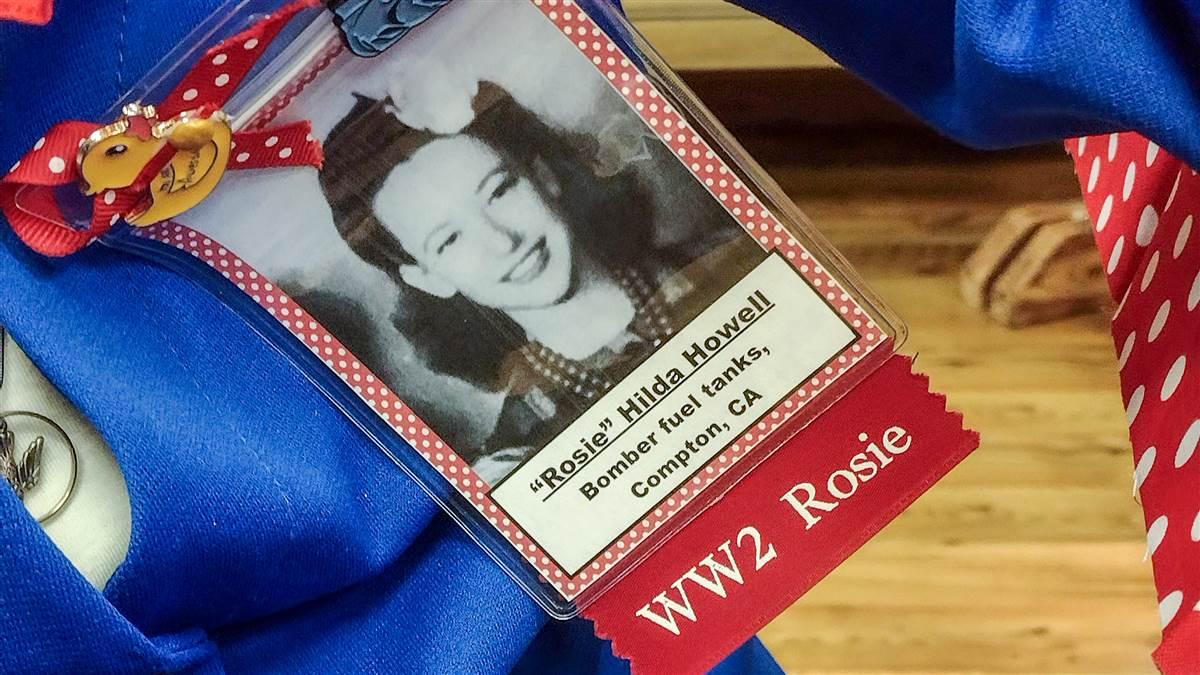She was a Rosie
Missouri woman receives Congressional medal

From a popular song by that title released in 1942, “Rosie the Riveter” represents a collective of some six million women who entered the workforce during World War II, filling positions traditionally held by men. Wearing pants and hair bandanas, the Rosies worked on the home front, manufacturing ships, aircraft, munitions, and other necessary supplies while men battled overseas.
Ninety-seven-year-old Hilda Howell, of rural southwest Missouri, was among their number. She and her daughter, Gwen Kelley, traveled to Washington, D.C., where, along with 26 of her peers, she accepted “the nation’s highest civilian honor” on behalf of a generation of women whose numbers are rapidly dwindling.
Howell, the fourth of five children in the Campbell family, was a high school student in Compton, California, south of Los Angeles, when the United States entered the war.
“My family had a dairy farm,” Howell said, “and my mom raised chickens and rabbits and a victory garden. My dad believed if kids were old enough to feed themselves, they were old enough to work.” Howell’s two older brothers and her younger brother served in the war. Her older sister joined the workforce also as a Rosie.
As soon as she was old enough, Howell joined students from several area high schools who rode buses to Compton Junior College, where Firestone manufactured fuel cells for nine different types of aircraft, including B–17 and B–29 bombers. It was one of 14 such sites in the United States and Canada.
“I sealed the rubber on the inside of fuel tanks for bombers, using a little wooden roller,” Howell said.
The work paid 26 cents an hour, and was dirty, she said. She viewed the job as a way to make money while serving her country in an area where residents’ nerves were on edge.

“I sealed the rubber on the inside of fuel tanks for bombers, using a little wooden roller,” said Hilda Howell.The “Battle of L.A.” stands out in Howell’s memories: the infamous night of February 24, 1942, in which American anti-aircraft fire filled the skies over Los Angeles after sightings of Japanese fighter planes were reported.
“We were under blackouts and curfews, so when airplanes started flying in, one after the other, we knew something was wrong,” said Howell, who ran outside with her brother to look up at the sky. “When I started hearing bullets, I ran back inside to pray.”
History later recorded the Battle of L.A. as a possible American over-reaction to either real or imagined sightings of a Japanese fighter planes. The night followed the verifiable surfacing of a Japanese submarine off the coast of Santa Barbara the previous day, from which artillery shells were lobbed at an oil field and refinery. Slight damage was reported from the incident, but no injuries. The Battle of L.A., however, was blamed for the deaths of five Los Angeles area residents from a car accident and cardiac arrests.
Howell also recalls the repercussions of President Franklin D. Roosevelt’s signing of Executive Order 9066, when some 120,000 Japanese American residents were removed to internment camps.
“I had a good friend, at the time, who was Japanese,” Howell said. “After the Japanese [internment], they sent an official to our house to tell my mother and me that my friend had been taken away, and that I wouldn’t be seeing her again.”
After the war ended, Howell married returning flight engineer, Harreld Howell, and the couple moved to Blanchard, Oklahoma, where they raised two children. After Harreld’s passing in 2012, Howell moved to her daughter and son-in-law’s rural southwest Missouri farm, where she still resides.
Howell took on multiple volunteer roles after the war; church librarian, Oklahoma Historical Society, census-taker, and Girl Scout leader, and sold Shaklee products from home, while caring for her aging mother and grandmother. She says she appreciates the national recognition the Rosies received, but, as with most women at the time, she just did what needed to be done.
In 1998, the American Rosie the Riveters Association was founded, and Howell joined them. Members Mae Krier and Phyllis Gould partnered in lobbying for recognition of the Rosies’s national contributions during World War II. They were joined in their efforts in 2012 by Raya Kenney, granddaughter of a Rosie, who now heads up a drive to establish a monument in Rosies’ honor at the nation’s capital.
Sheila Harris is a writer and aviation enthusiast living in Missouri.


